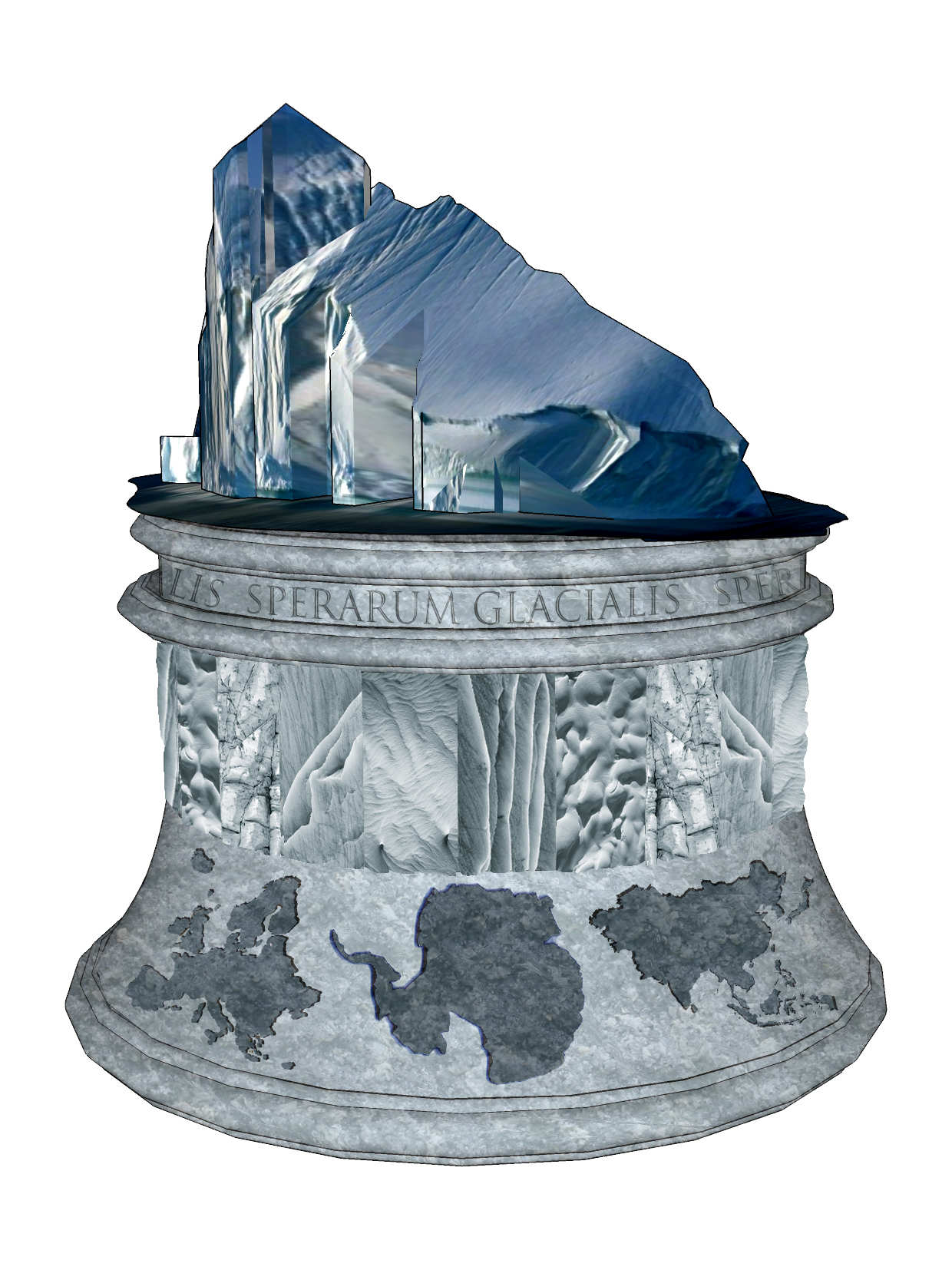Terra Memorium, 2018
Modus Operadi
Grey Friars Passage, City of London
Terra Memorium is a speculative memorial to Earth’s atmosphere (Atmosphaeram), biodiversity (Biodiversitatis), and glacial ice (Sperarum Glacialis) which are all currently under threat due to human induced climate change. The proposed artwork operates as a celebration of these vital Earth entity’s whilst simultaneously acting as a somber warning for a near future where they may no longer exist with our current consumption of fossil fuels.
The site for the commission, Chrsitchurch Greyfriars, has existed as a religious place since the 13th century and is endowed with a long and fascinating history. During its early medieval days as a Franciscan monastery, no less than three Queens and one Queen’s heart were buried there. Terra Memorium borrows the site’s history of the buried Queens to determine its form hence the three large memorials representing the Queens and a smaller forth, representing the Queen’s heart.
The style of the proposed artworks is reminiscent of classical architecture, embracing symmetry, traditional decorative elements (moulding), and the plinth / sculpture relationship. The intention is to reflect the older, more historical aspects of the built environment that surround Christchurch Greyfriars, offering a sense of congruity to the location. All of the text within the piece are in Latin, due to the role of this ancient language in theology, biology, science, medicine, and law. Contrasting these classical references, each memorial sculpture has a vibrant, semi-translucent, brightly coloured component which shifts the materiality of the artwork into the contemporary realm. These colourful components will assist in drawing viewers into the space.
The content of each memorial sculpture is idiosyncratic to their individual themes. The plinth for Atmosphaeram is adorned with carbon and methane molecules which are the most abundant of the greenhouse gases emitted by the burning fossil fuels. The colourful, layered, transparent, component that sits on the plinth represents the layers of Earth’s atmosphere which include the Troposphere, Stratosphere, Mesosphere, Thermospere, and the Exosphere. Our atmosphere is essentially what makes Earth a habitable place for biological life. The absorption of greenhouse gases into the atmosphere has accelerated global warming to an unprecedented rate.
The loss of biodiversity in ecosystems is caused by numerous human induced activities such as climate change, pollution, introduction of invasive species, habitat loss, and the over exploitation of land and sea. The memorial sculpture Biodiversitatis focuses on aspects of biodiversity depletion that are well known and frequently mentioned in media and culture. The base of the Biodiversitatis plinth is adorned with images of pollinators, bees and butterfly’s, which are essential in numerous ecosystems and the production of our food. The mid-section is clad in a repeating honeycomb pattern, and the top section of the plinth is adorned with an array of brightly coloured tropical leaves representing the flora of Amazonian rainforests. The sculpture is crowned with an elaborate representation of a coral reef.
The third memorial represented in Terra Memorium is Sperarum Glacialis (glacial ice), a vital regulating factor in Earth’s biosphere of which we have already lost at alarming rates due to global warming. The loss of Earth’s glacial ice has increased the planet’s temperatures causing a frequency in debilitating temperamental storms. The warming of the oceans is greatly affecting their ability to sequester carbon and support diverse lifeforms. The base of the plinth is embellished with reliefs of Earth’s continents which will change shape as sea levels rise and heavily populated coastlines disappear. The mid-section of the plinth consists of an array of cast panels representing patterns found in glacial ice formations. On top of the plinth sits a semi-translucent robust form representing a glacier.
Each of these elements exist together through interconnected planetary/ecological systems. The collapse of one detrimentally effects the others and from what scientists have observed and reported, the effects are accumulating. The fourth smaller memorial sculpture in Terra Memorium, is a small plinth which points at the “heart” of the issue of climate change, fossil fuels. The top of the plinth has an engraved text that reads Fossilis Industria (fossil energy) and the word Anthropocene around the base. The Anthropocene is the proposed current geological epoch which recognises the significant human impact on the earth’s geology and ecosystems.





